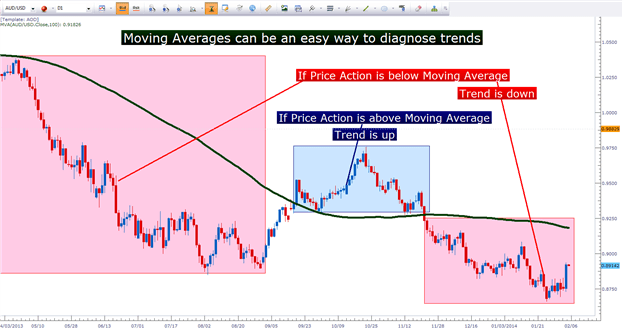
There are many types of orders on the stock market. These include limit orders and market order. Limit orders restrict the amount of buy and sell orders to a predetermined amount. This type of order works well if you have an exact amount in your mind. You can also cancel an existing order using this option.
Limit orders
Limit orders are an order placed at a fixed price. If the stock price reaches this price, the order will be executed. Investors who do not want to monitor stock price movements can use limit orders. You should be aware that a limit order does not guarantee its success.

Market orders
If you're considering trading in the stock market, understanding the different types of orders available can give you a competitive edge. Each type of order is created for a particular purpose. The type of order that you choose will depend on your primary goal.
Buy to Open
Options traders can use the buy-to-open order to open a new position in an underlying security. This allows a trader to take advantage of rising price trends, and a call or put option's premium is immediately debited from a trader's account. In order to profit from a Buy to Open trading, the price must rise beyond a certain level, known as the breakeven point. If the price falls below that point, the trader is out of pocket.
One cancels other orders
One Cancels Other Orders are special orders that are used by skilled traders. This order allows you to cancel an order or place a partial order. This order can also be useful to take advantage of price breakouts or manage risk.
Fill-or-kill
Fill-or-kill orders allow investors to make large purchases in one transaction. These orders require the broker instantly to fill the order at a set price. Otherwise, the order will be automatically cancelled. They are ideal for large orders, since they avoid the risk of price changes and market disruption.

Limit-if-touched
A Limit-if-touched order is an order that is placed in the market to buy or sell a contract at a certain price if a specific trigger price is reached. This is an exception to the standard limit order because the trader can specify a limit-price and trigger price. A Limit-if-touched limit order can only be executed if an asset's price meets the trigger price. This is usually a price that is just a few points higher or lower than the current market price.
FAQ
What are the best investments for beginners?
Investors new to investing should begin by investing in themselves. They should learn how manage money. Learn how to prepare for retirement. Learn how to budget. Learn how you can research stocks. Learn how you can read financial statements. Avoid scams. How to make informed decisions Learn how to diversify. Learn how to protect against inflation. Learn how to live within ones means. Learn how you can invest wisely. This will teach you how to have fun and make money while doing it. You will be amazed by what you can accomplish if you are in control of your finances.
How long does it take for you to be financially independent?
It depends on many things. Some people become financially independent overnight. Others need to work for years before they reach that point. It doesn't matter how much time it takes, there will be a point when you can say, “I am financially secure.”
You must keep at it until you get there.
What should I look out for when selecting a brokerage company?
There are two main things you need to look at when choosing a brokerage firm:
-
Fees: How much commission will each trade cost?
-
Customer Service - Do you have the ability to provide excellent customer service in case of an emergency?
Look for a company with great customer service and low fees. If you do this, you won't regret your decision.
How do I know when I'm ready to retire.
It is important to consider how old you want your retirement.
Is there a particular age you'd like?
Or would you prefer to live until the end?
Once you've decided on a target date, you must figure out how much money you need to live comfortably.
The next step is to figure out how much income your retirement will require.
Finally, determine how long you can keep your money afloat.
What kind of investment vehicle should I use?
Two main options are available for investing: bonds and stocks.
Stocks represent ownership interests in companies. They are better than bonds as they offer higher returns and pay more interest each month than annual.
Stocks are the best way to quickly create wealth.
Bonds are safer investments, but yield lower returns.
Keep in mind that there are other types of investments besides these two.
They include real property, precious metals as well art and collectibles.
Do you think it makes sense to invest in gold or silver?
Gold has been around since ancient times. And throughout history, it has held its value well.
Like all commodities, the price of gold fluctuates over time. You will make a profit when the price rises. If the price drops, you will see a loss.
It all boils down to timing, no matter how you decide whether or not to invest.
How can I reduce my risk?
You must be aware of the possible losses that can result from investing.
It is possible for a company to go bankrupt, and its stock price could plummet.
Or, a country's economy could collapse, causing the value of its currency to fall.
You run the risk of losing your entire portfolio if stocks are purchased.
Therefore, it is important to remember that stocks carry greater risks than bonds.
One way to reduce your risk is by buying both stocks and bonds.
You increase the likelihood of making money out of both assets.
Another way to limit risk is to spread your investments across several asset classes.
Each class is different and has its own risks and rewards.
For example, stocks can be considered risky but bonds can be considered safe.
If you are looking for wealth building through stocks, it might be worth considering investing in growth companies.
Saving for retirement is possible if your primary goal is to invest in income-producing assets like bonds.
Statistics
- Some traders typically risk 2-5% of their capital based on any particular trade. (investopedia.com)
- An important note to remember is that a bond may only net you a 3% return on your money over multiple years. (ruleoneinvesting.com)
- If your stock drops 10% below its purchase price, you have the opportunity to sell that stock to someone else and still retain 90% of your risk capital. (investopedia.com)
- They charge a small fee for portfolio management, generally around 0.25% of your account balance. (nerdwallet.com)
External Links
How To
How to invest In Commodities
Investing in commodities means buying physical assets such as oil fields, mines, or plantations and then selling them at higher prices. This is known as commodity trading.
Commodity investing works on the principle that a commodity's price rises as demand increases. The price of a product usually drops when there is less demand.
You will buy something if you think it will go up in price. You would rather sell it if the market is declining.
There are three main categories of commodities investors: speculators, hedgers, and arbitrageurs.
A speculator is someone who buys commodities because he believes that the prices will rise. He does not care if the price goes down later. A person who owns gold bullion is an example. Or someone who invests on oil futures.
An investor who buys a commodity because he believes the price will fall is a "hedger." Hedging can help you protect against unanticipated changes in your investment's price. If you own shares of a company that makes widgets but the price drops, it might be a good idea to shorten (sell) some shares. That means you borrow shares from another person and replace them with yours, hoping the price will drop enough to make up the difference. When the stock is already falling, shorting shares works well.
An "arbitrager" is the third type. Arbitragers trade one item to acquire another. For example, if you want to purchase coffee beans you have two options: either you can buy directly from farmers or you can buy coffee futures. Futures allow you the flexibility to sell your coffee beans at a set price. You have no obligation actually to use the coffee beans, but you do have the right to decide whether you want to keep them or sell them later.
The idea behind all this is that you can buy things now without paying more than you would later. If you're certain that you'll be buying something in the near future, it is better to get it now than to wait.
But there are risks involved in any type of investing. One risk is that commodities prices could fall unexpectedly. Another possibility is that your investment's worth could fall over time. Diversifying your portfolio can help reduce these risks.
Taxes should also be considered. When you are planning to sell your investments you should calculate how much tax will be owed on the profits.
Capital gains tax is required for investments that are held longer than one calendar year. Capital gains taxes apply only to profits made after you've held an investment for more than 12 months.
If you don't anticipate holding your investments long-term, ordinary income may be available instead of capital gains. Earnings you earn each year are subject to ordinary income taxes
When you invest in commodities, you often lose money in the first few years. But you can still make money as your portfolio grows.